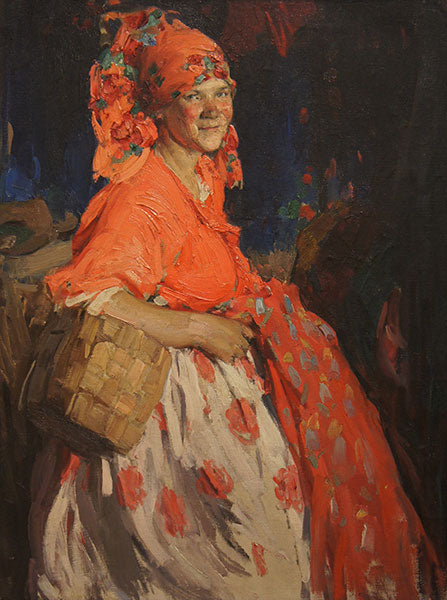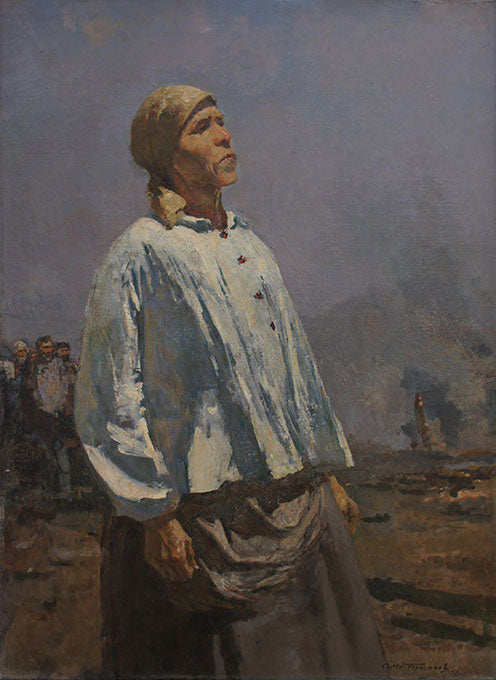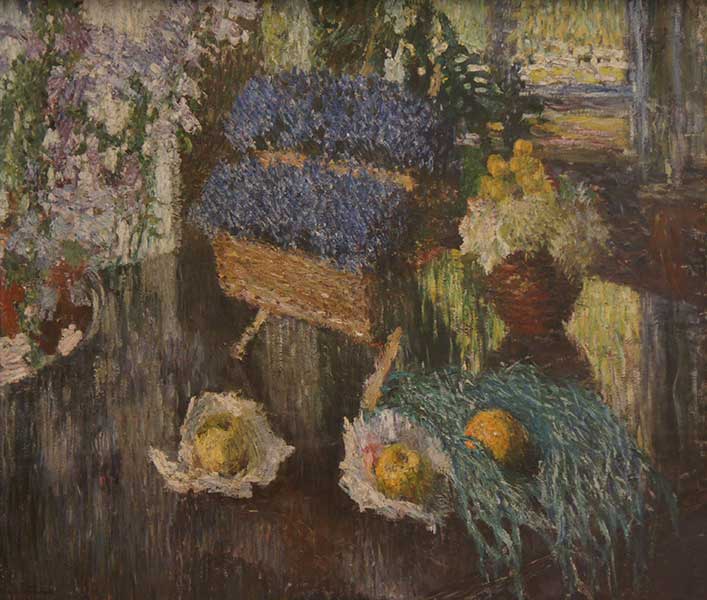Notable Russian Sculptors
by Cathy Locke
For hundreds of years Russian art was comprised of the creation of religious icons and folk art, completely missing the renaissance and baroque periods of European art. It was not until the age of neoclassicism, when in 1764, the Imperial Academy was formally established by Catherine the Great (1729-96). The early years of the Academy were humble as they bribed European artists to come teach in the damp cold city of St. Petersburg. The first generation of Russian superstars did not appear on the scene until the early 1800s, with painters like Karl Brullov (1799-1852), Fyodor Bruni (1799-1875) and Alexander Ivanov (1806-1858). Joining this generation of Academy graduates was sculptor Boris Orlovsky (1797-1837). Born a serf in the same rural area as Leo Tolstoy(1828-1910) would later have an estate, Orlovsky’s master sent him to the Imperial Academy from 1810 to 1823. After 25 years of serfdom Orlovsky was finally freed in 1822 after sculpting a bust of Tsar Alexander I (1777-1825).

In 1829, Tsar Nicholas I (1796-1855) began a spending spree to improve the arts in St. Petersburg and Orlovsky was able to secure a number of prized commissions. On September 11, 1834 the Alexander Column, designed by French architect Auguste Montferrand (1786-1858), was raised in Palace Square directly in front of the Winter Palace, which today is the Hermitage Museum. Orlovsky sculpted the angel that sits on top of this column holding a cross and guarding all that she sees. Nicholas I dedicated the monument to his brother Alexander I, who led a victorious campaign against Napoleon Bonaparte (1759-1821) in the War of 1812. The face of the angel bears an eerie similarity to the face of Alexander I. In 1837, Orlovsky designed two large bronze statues of generals of that war, Prince Mikhail Kutuzov (1745-1813) and Prince Michael Barclay de Tolly (1761-1818), both of which stand in front of the Cathedral of Our Lady of Kazan. There is a certain irony that all three of these monumental sculptures, created by a former serf, today are prominent sites that make up the landscape of tsarist Russia in St. Petersburg. Orlovsky’s skill was not limited to war time monuments, in 1837 he created the magnificent neoclassical marble sculpture of the mythological creatures Faun and Bacehante, that sits in the main gallery of the Russian Museum today.

By the mid-1800s Russian sculptors were breaking away from the cold look of neoclassical art and began giving their work a softer look and feel. Two notable sculptors working in the style of romanticism were Anton Ivanov (1815-1848) and Fyodor Kamensky (1836-1913). The younger brother of the painter Alexander Ivanov, Anton showed great promise in his short life. In his marble sculpture Young Lomonosov on the Seashore(1845), Ivanov depicts Mikhail Lomonosov (1711-1765) a Russian polymath, who made important contributions to literature, education and science. In this sculpture we see a relaxed Lomonosov deep in thought with a book resting on his leg. This marks a far more passive approach to sculpture than Orlovsky’s Prince Mikhail Kutuzov, who is standing at attention with a sword in his left hand and his right arm stretched out to direct troops forward into battle. In a very similar style Kamensky produced a series of sculptures depicting daily life of women and children. In his marble sculpture First Step(1872) we see a small toy on the floor and a mother with her arms stretched out to guide her child who takes his first step. Both sculptures offer clear examples of a soft side of humanity and are a pronounced departure from work that was created during the first forty years of the 1800s.
In 1862 an event happened that rocked the Russian art community. During the International Exhibition held in London that year art critics blasted Russian art as “being devoid of any originality,”1igniting concerns of many Russian artists. The critics argued that Russian art needed to shed its “cosmopolitan garb” and become focused on native themes. After nearly a century of being forced to create art that had nothing to do with Russia these artists had had enough. This event gave birth to a new group of artists who called themselves the Wanderers, known in Russian as Peredvizhnichestvo. This group of artists grew to encompass most working artists in Russia during the late 1860s through the mid-1880s. The Wanderers gave birth to a new social artistry that dealt with issues of social injustices and critical realism. One prominent sculptor who worked with these themes was Marc Antokolsky (1842-1902).The artist was born into a poor Jewish family and described his childhood as "so dismal that it makes me shudder to remember it."2 His first major success was Ivan the Terrible (1870), his graduate piece from the Imperial Academy. This sculpture was an innovation for its time because the tsar is not portrayed as a grandiose ruler as in neoclassical art, but instead we see a very human approach to depicting this notorious ruler. Antokolsky sculpts a sad old man crouched on his throne as if all the air has been knocked out of his lungs. His head bowed, one hand gripping his rosery with a bible on his lap. Leaning against his chair we see the infamous staff he used to kill his son. Antokolsky reflects on the actions of this ruler with a very humanizing approach. The sculpture produced such a great impression on Alexander II that he ordered a bronze cast for the Hermitage Museum and gave the talented artist the title of academician, freeing him from all required military duties of young Jewish men in Russia during this time period.

By the beginning of the 1900s notable female sculptors start dominating the field. In 1903, Anna Golubkina (1864-1927) was commissioned by the textiles magnate Savva Morozov (1862-1905) to create a facade to the Moscow Art Theatre. The astonishingly difficult undertaking of creating The Swimmer required Golubkina to construct her image in high-relief, as opposed to the traditional bas-relief panel. In this type of relief, the sculptor was able to bring together the sculptural forms of moving water with the complex foreshortening of the swimmer jetting out from the waves. Having considered the building’s function, rhythms and the direction of the passers-by, as well as the distinct psychology of theatre-goers Golubkina’s fluid creation became the first symbol of Russian Modernism. Golubkina’s work boldly expresses the mood of the time and was the first monumental relief sculpture created by a Russian. She was also the first Russian sculptor to receive the Paris Salon prize, quite an accomplishment for a female artist. She is given credit for helping Russian sculpture achieve independence from painting.

Described as “strong, wise, tender and kind-hearted, Yekaterina Belashova (1906-1971) was an unforgettable personality and a loyal and generous friend.”3 Anna Golubkina was a major influence on Belashova’s work, she once wrote “Let us work as Golubkina always encouraged us: out of wonder, not out of anxiety.”4 The 1930s was a time when Joseph Stalin (1878-1953) was controlling all artistic output in Russia. One of his approved themes for artists was the creation of Russia’s heroes, which Belashova focused her work. During this period, she married Mikhail Belashov also a sculptor, and together the couple took part in a number of design competitions. Their designs were consistently innovative and original winning them numerous commissions, some of which include statues of: soldier Vasily Chapaev (1930), poet Taras Shevchenko (1930-1931), and the pilots Viktor Kholzunov (1940) and Anatoly Serov (1941).
In 1941 Belashova’s husband was killed in WWII. Finding herself alone with her small son, the sculptor turned to her art for support. Throughout the war she created works that expressed her emotional torment. Beginning with The Fighter (1942) in honor of her husband. In 1943, she created Unvanquished, an image of a fragile, yet steadfast woman, who’s very being rebels against the horrors of war and death. Central to Belashova’s work of this period was the human striving for high ideals: the contemporary hero who acts, when action is called for. “The hero, as she herself noted, ‘…emerges from life itself, if the artist can but look carefully. There is no need to search for a hero – he is always right there beside you.’”5 Belashova continued to work and remained active for most of her life. Belashova lived by a quote from her friend and fellow sculptor Sergei Konenkov (1874-1971): “Each and every day should bring joy. Remember this and rejoice at every day you live.” She remembered these words throughout her life.
Sources
1. Elizabeth Kridl Valkenier, The Wanderers Masters of 19th- Century Russian Painting, Dallas Museum of Art, 1990, page 2.
2. Lyubov Golovina, International Panorama, Tretyakov Gallery Magazine issue: #3 2013 (40)
3., 4. & 5. Tatiana Zuykova and Olga Romanova, A Woman of Her Times: An Essay on the Scuptor Yekaterina Belashova, The Tretyakov Gallery Magazine, January 2007, page 58-64
About the Author
Cathy Locke is an award-winning fine art painter, professor and published writer, specializing in Russian art of the 19th and 20th centuries. She is the editor of Musings-on-art.org.
Cathy Locke’s artwork – www.cathylocke.com














